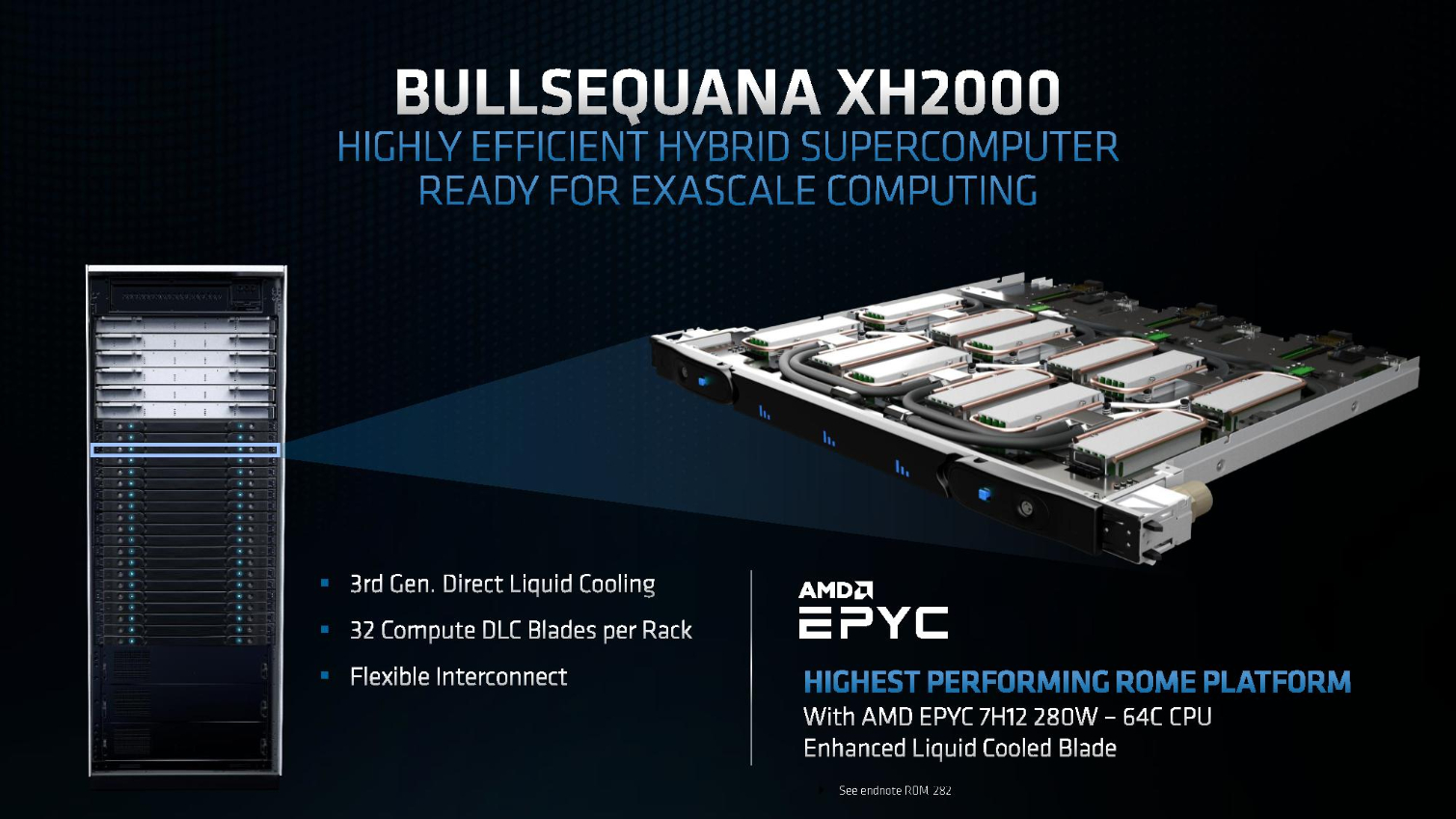AMD's EPYC Rome Sets New Performance Record in BullSequana Supercomputer
Earlier this week, AMD announced its performance-focused EPYC Rome 7H12, which is essentially an EPYC 7742 with a much higher all-core clock speed (which is made possible due to increased power consumption). AMD announced the EPYC 7H12 alongside Atos's watercooled BullSequana supercomputer, and almost immediately Atos started setting more EPYC performance records.
According to Atos and AMD, BullSequana set four new records in the SPEC CPU 2017 benchmark suite, all of which were previously held by AMD's EPYC 7742. Thanks to its higher clock speeds, the 7H12 packs about 11% more TFLOPs of performance than the 7742, though that only equated to a few percentage points of extra performance in the SPEC benchmarks. Nonetheless, the 7H12 could easily be as much as 11% faster in other benchmarks or types of workloads.
The new records add to EPYC Rome's already-impressive list of 100+ performance records. Atos praises the 7H12’s power efficiency, but the 7H12 isn't exactly focused on power efficiency. For 11% more performance than the 7742, the 7H12's 280W TDP is almost 25% higher. That doesn't necessarily mean 25% more power consumption, as TDP isn't a one-to-one mapping to power consumption, but it still represents a significant bump. The 7H12 isn't inefficient, though, it's just not as efficient as a slightly slower CPU. In either case, sometimes it's worth it to sacrifice some efficiency for performance in high performance computing (HPC) workloads.
AMD claims the 7H12 also provides a very low total cost of ownership (TCO) relative to the performance it delivers. We don't know pricing for the 7H12, but it's obviously higher than the 7742. Considering the 7H12 is also less efficient, the fact that it is still competitive is somewhat impressive.
AMD has emphasized Epyc's lower TCO compared to Intel's Xeon since its first-gen EPYC Naples chips debuted in 2017. Though Rome is more expensive than Naples, its increased core count and more 7nm efficient process allow AMD to continue asserting its TCO story. EPYC Rome has already penetrated heavily into the supercomputing realm, and BullSequana likely won't be the last supercomputer to adopt the new chips.
Get Tom's Hardware's best news and in-depth reviews, straight to your inbox.

Matthew Connatser is a freelancing writer for Tom's Hardware US. He writes articles about CPUs, GPUs, SSDs, and computers in general.
